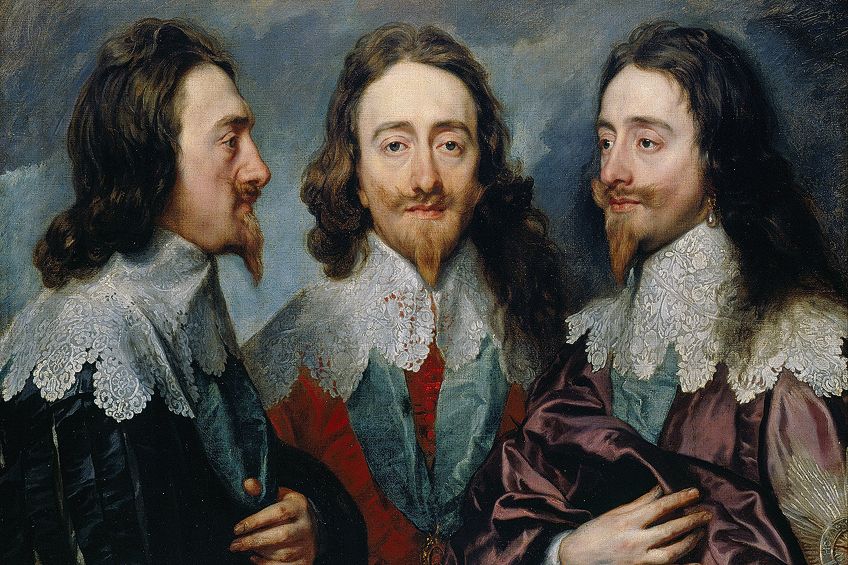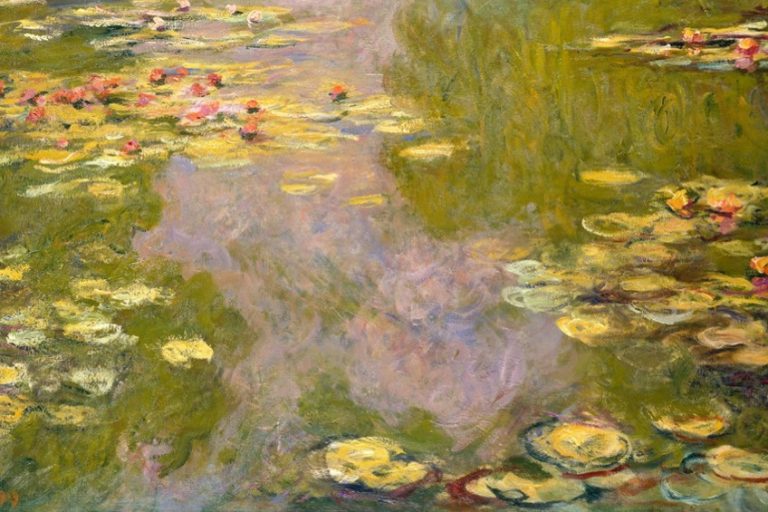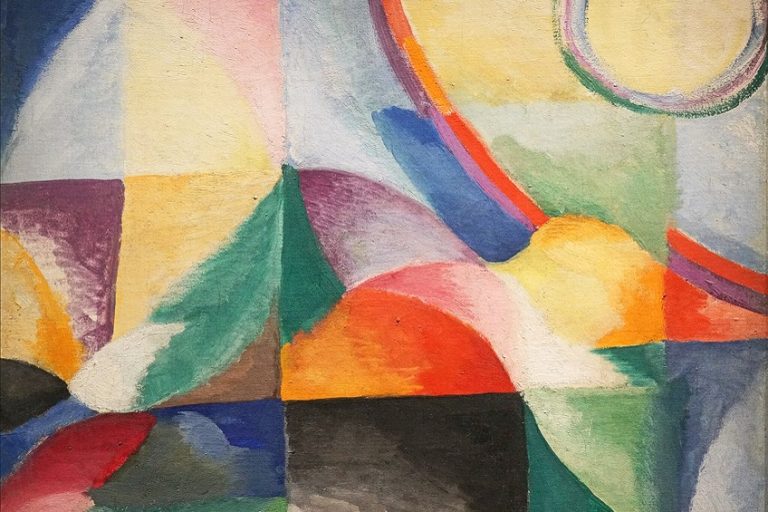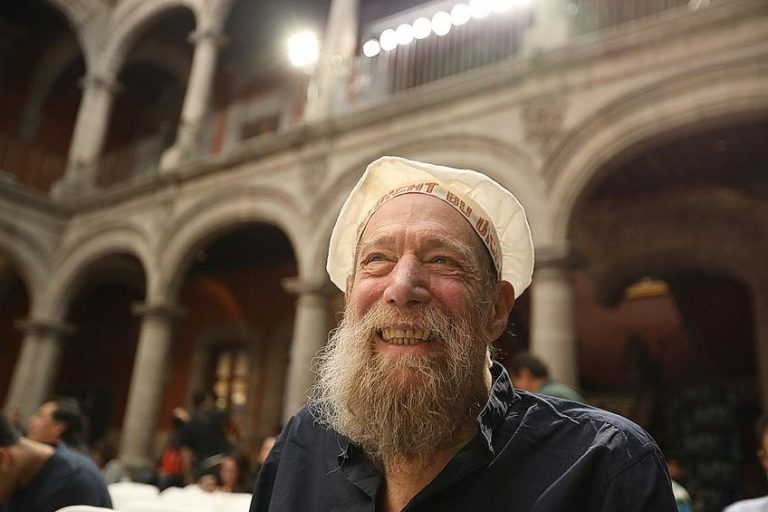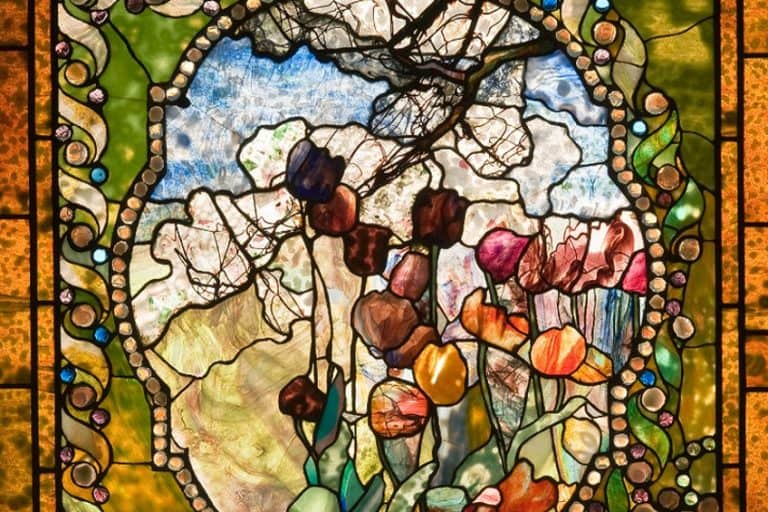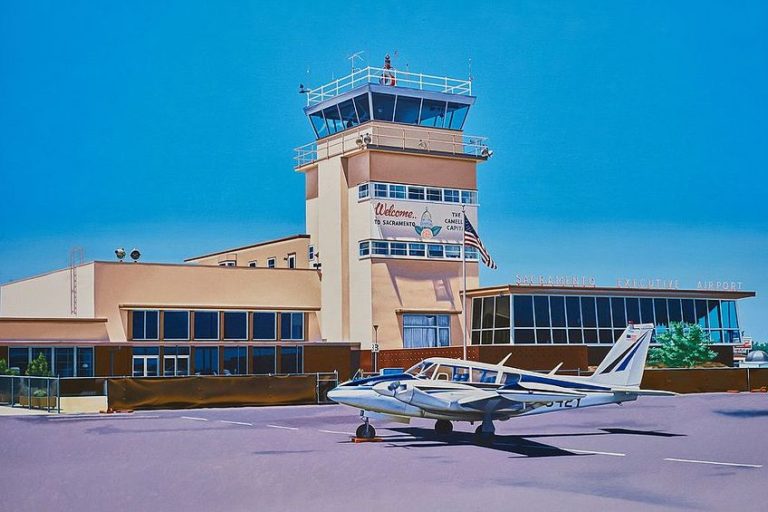Famous Baroque Artists – Top Baroque Painters and Sculptors
Baroque art followed after the periods of Renaissance and Mannerist art and came before the Rococo and Neoclassical styles. It first developed and prospered from the early 17th century until the mid 18th century in Europe. The best Baroque painters produced masterful works of art that can be recognized by their use of deep colors, exhilarating detail, contrast, and a sense of grandeur.
Famous Baroque Artists
Baroque art differed from the preceding periods due to its striking realism and lively subject matter. Baroque period artists intended to capture the visual drama or action of a specific moment, mostly religious and biblical in content. Baroque art is intrinsically linked to the Catholic Church and was created to induce a sense of reverence and awe in its religious followers.
Today, we will take a look at the most famous Baroque artists that left their mark and legacy in the history books of the art world.
Caravaggio (1571 – 1610)
| Nationality of Artist | Italian |
| Places Artist Lived | Rome, Naples, Sicily |
| Medium Artist is Known For | Painting |
| Associated Movements of Artist | Caravaggisti, Baroque |
Caravaggio was born in Milan on the 29th of September, 1571, under his full name Michelangelo Merisi da Caravaggio. The very last few years of his life were spent living between the cities of Malte, Naples, and Sicily, before which he had spent most of his life forging a career as an artist in Rome.
Out of all the Italian Baroque painters, Caravaggio’s work had the greatest impact and influence on the other artists of his generation in the early formative days of the Baroque movement. He was particularly renowned by scholars and other artists for his dramatic and grand use of lighting, as well as his realistic portrayals of the human state concerning emotional and physical conditions and tribulations.
Caravaggio gained popularity through his unique renditions of classical themes as his technical prowess.

A predominant aspect of Baroque art is the application of an art technique called chiaroscuro, which relates to the dramatic interaction between the dark and light aspects of a painting, usually set in great contrast. Caravaggio is regarded as the inventor of a similar technique that became a popular staple of the Baroque movement, known as tenebrism. This technique also relates to the interplay between the light and dark elements of the composition, but tends to focus more on the dark areas.
These mysterious and gloomy dark areas would contrast with the lighter areas, creating what is referred to as “dramatic illumination”.
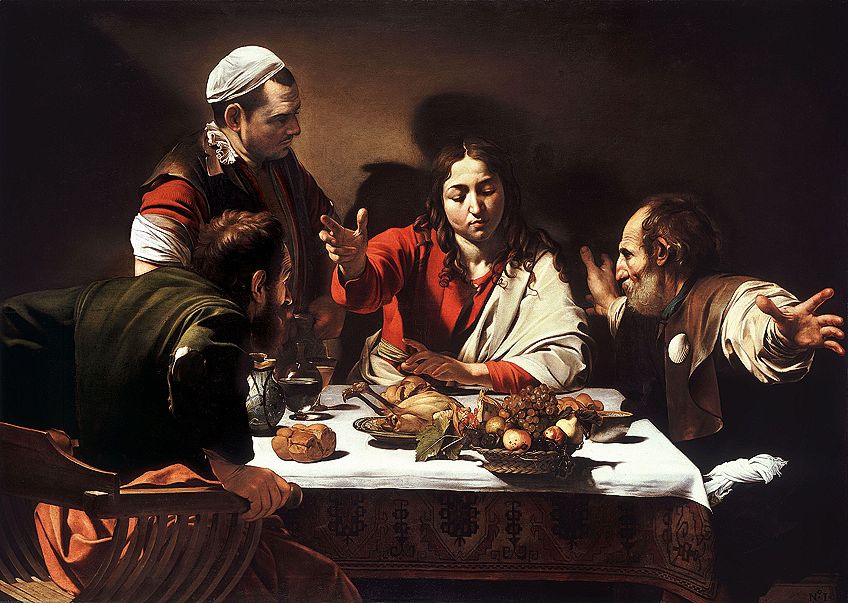
He was highly respected and admired for his depictions of dramatic scenes of violence, struggle, retribution, and death. His awe-inspiring use of lighting helped to illuminate the emotions of very action-orientated moments. His style is so characteristic that it led to the formation of a style that was employed by many artists such as Rembrandt, Bernini, and de Ribera, known as Caravaggisti. A few notable examples from this famous Baroque period artist are:
- The Calling of Saint Matthew (1600)
- Supper at Emmaus (1601)
- David with the head of Goliath (1699)
Peter Paul Rubens (1577 – 1640)
| Nationality of Artist | Flemish |
| Places Artist Lived | Siegen, Germany and Antwerp, Belgium |
| Medium Artist is Known For | Painting |
| Associated Movements of Artist | Baroque, Dutch Golden Age |
Peter Paul Rubens was born in Siegen, Germany on the 28th of June, 1577. His parents Jan and Maria were Calvinists and left the city of Antwerp due to its increasingly Catholic Spanish-dominated political and religious climate and relocated to Cologne. Jan Rubens was then sentenced to the death penalty for having an affair with the princess of Orange. His wife Maria managed to get him freed on the condition that they were to be exiled to Siegen in Westphalia. It was while exiled in Siegen that Peter Paul Rubens was born.
Peter Paul Rubens was a highly productive Flemish Baroque period artist, and a prominent figure of the exhilarating Baroque style who focused on color, movement, and a sense of sensuality.

He is most remembered for his religiously-themed artworks such as his counter-reformation altarpieces, his portraits, landscapes, and paintings of allegorical and mythological moments in history, both real and fabricated.
Peter Paul Rubens was knighted twice, once by Charles I, king of England, and another time by Philip IV, king of Spain.
He was a humanist scholar who was classically educated, a diplomat, and an art collector in addition to being one of the most revered of the Baroque painters. His large and productive studio in Antwerp was very popular with art collectors and nobility throughout the European region. A few prime examples of his work are:
- Samson and Delilah (1610)
- The Descent From the Cross (1614)
- The Judgment of Paris (1639)
Artemisia Gentileschi (1593 – 1656)
| Nationality of Artist | Italian |
| Places Artist Lived | Rome and Naples, Italy |
| Medium Artist is Known For | Painting |
| Associated Movements of Artist | Baroque, Feminist |
Artemisia Gentileschi is unique among other Italian Baroque painters as being one of the very few female painters on the list of famous Baroque artists. Artemisia Gentileschi was born in Rome, Italy on the 8th of July, 1593. She is regarded by historians as being one of the most highly celebrated painters from the 17th century. She was very accomplished as an artist, beginning her career at the tender age of fifteen.
She helped pave the way for many female artists that followed after her. Her works often referenced the feminine aspect, such as her strong portrayals of women as mythical, biblical, and historical figures.
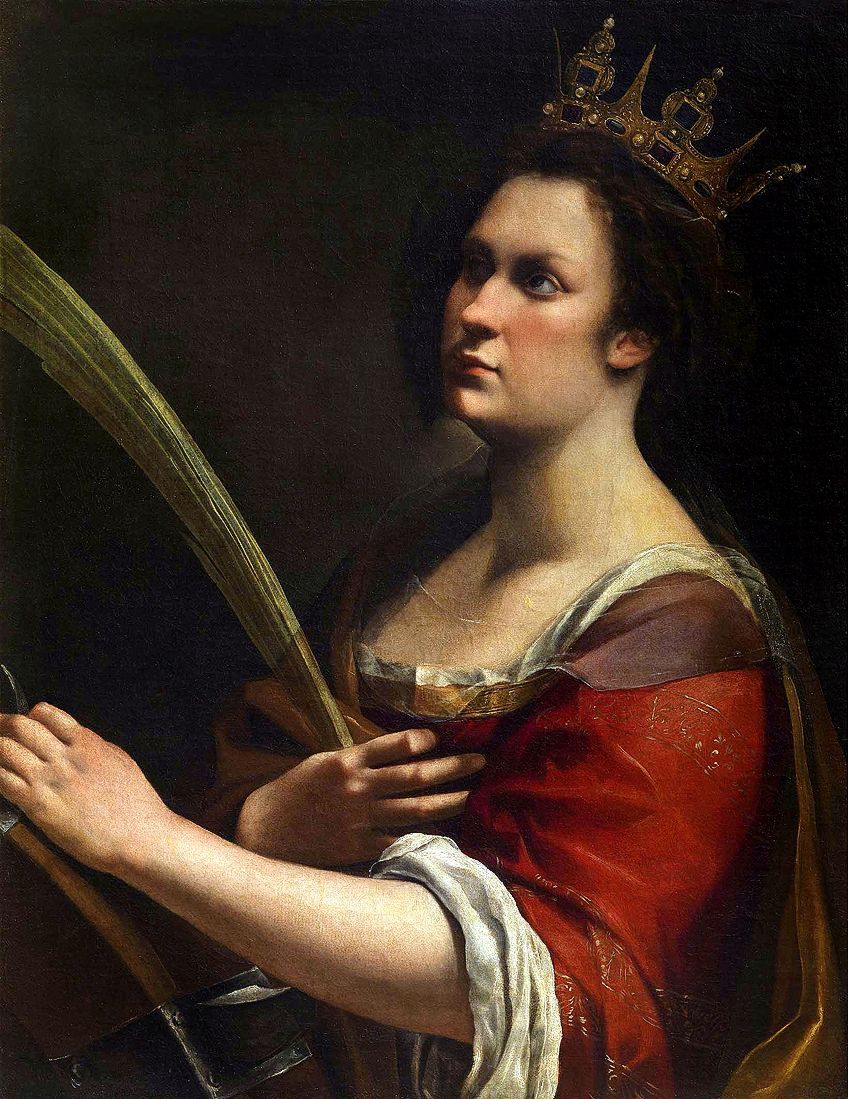
She was the very first female to be accepted as a member of the Accademia di Arte del Disegno and had many patrons and clients from outside her own country. Stylistically, she was renowned for her ability to portray the feminine figure in a naturalistic and realistic manner, and her great skill in using color to express layers of drama and dimension in her compositions. Unfortunately, her skills and talents were for a very long time overshadowed by the scandalous trial of her rapist, the landscape painter Agostino Tassi, who was convicted of raping Artemisia Gentileschi when she was still a very young woman.
Due to her gender and the sensation surrounding the rape trial, she was considered a bit of a curiosity for a while before her work was re-studied by scholars in the last couple of centuries, after which she was announced as one of the most expressively charged and progressive artists of her generation.

Her work has since been recognized by the art institution for its exemplary display of talent through exhibitions held at many fine institutions of art, including the National Gallery in London. A few of Artemisia Gentileschi’s most notable works are:
- Judith Slaying Holofernes (1612-1613)
- Saint Catherine of Alexandria (1619)
- Jael and Sisera (1620)
Nicolas Poussin (1594 – 1665)
| Nationality of Artist | French |
| Places Artist Lived | France and Italy |
| Medium Artist is Known For | Painting |
| Associated Movements of Artist | Baroque, Classicism |
Nicolas Poussin was a classical French Baroque period artist born near Les Andelys in Normandy in 1594. Although he was born in France, he spent most of his time living and working from Rome in Italy. He also worked in Paris for a brief period as a painter for King Louis XIII and Cardinal Richelieu before he returned to Rome.
Poussin’s art is exemplified by the application of order in his composition, reason, and clarity, favoring line in his painted landscapes over color.
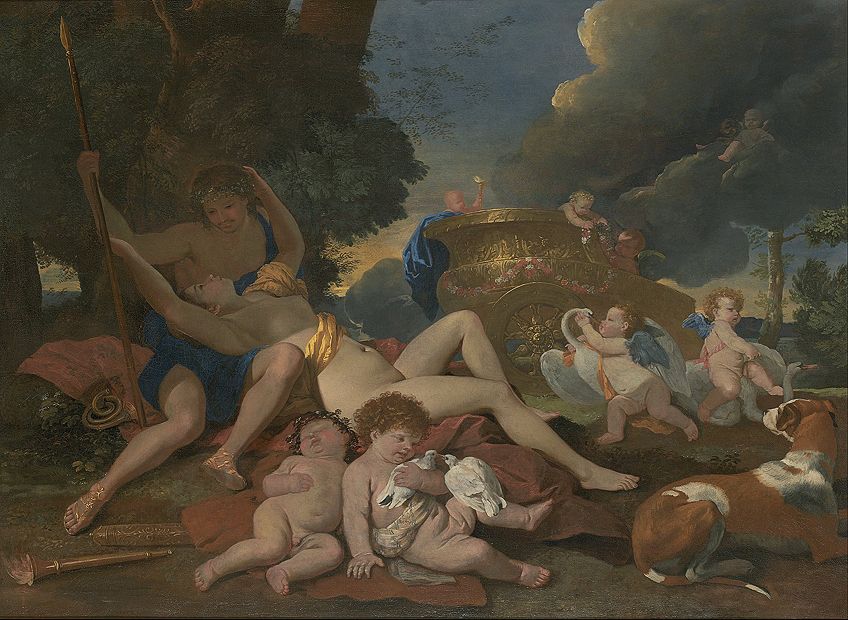
Poussin is often credited by scholars as being the creator of the conceptual theme of perfect landscapes, where the intrinsic connection between humans and their surroundings is explored visually. He often depicted humankind in a gloriously exalted manner, intending to stir deep contemplation within the viewer as to his own connection to the natural world that surrounds us. A few exemplary works by the artist includes:
- Death of Germanicus (1628)
- The Inspiration of the Poet (1629)
- Venus and Adonis (1628)
Francisco de Zurbarán (1598 – 1664)
| Nationality of Artist | Spanish |
| Places Artist Lived | Fuente de Cantos |
| Medium Artist is Known For | Painting |
| Associated Movements of Artist | Baroque, Caravaggisti |
Francisco de Zurbarán was a Spanish Baroque painter born in Fuente de Cantos in 1598. Zurbarán is known for his Baroque paintings that portray nuns, martyrs, monks, and other religious subject matter. He has been dubbed the “Caravaggio of Spain” due to his mastery of the technique known as chiaroscuro. Zurbarán was already fascinated by art from a young age, reproducing objects in charcoal drawings before being sent to apprentice with Pedro Diaz de Villanueva.

In 1626 he received his first major commission to produce 21 paintings for a Dominican monastery, which had to be completed within eight months. This work helped establish the Baroque period artist as a rising talent to be watched, and two years later he was commissioned by the Monastery of the Mercedarians of Seville to produce 22 more paintings.
In 1630, Zurbarán was appointed the personal royal painter of Philip IV.
It is unknown whether Zurbarán had ever had the opportunity of seeing Caravaggio’s work with his own eyes, but many scholars have illustrated similarities in technique regarding both artists’ dramatic use of light and dark elements to create their work. Zurbarán was particularly noted for his ability to paint materials such as robes and draperies in a naturalistic manner. A few notable examples of Zurbarán’s work include:
- Christ on the Cross (1627)
- Still Life With Pots (1650)
- Immaculate Conception (1630)
Gian Lorenzo Bernini (1598 – 1680)
| Nationality of Artist | Italian |
| Places Artist Lived | Naples and Rome, Italy |
| Medium Artist is Known For | Sculptor |
| Associated Movements of Artist | Baroque |
Gian Lorenzo Bernini was an Italian architect and sculptor born in Naples on the 7th of December, 1598. He was well known and respected in architectural circles, but it was his work with sculpture that has led to his status as the most prominent figure in the development of Baroque-style sculpture. His was the first work to be identifiable with a specific vision.
Although not particularly noted among other Italian Baroque painters, his sculptures are considered hugely influential and it has been said that he is to sculpture what Shakespeare was to the theater.
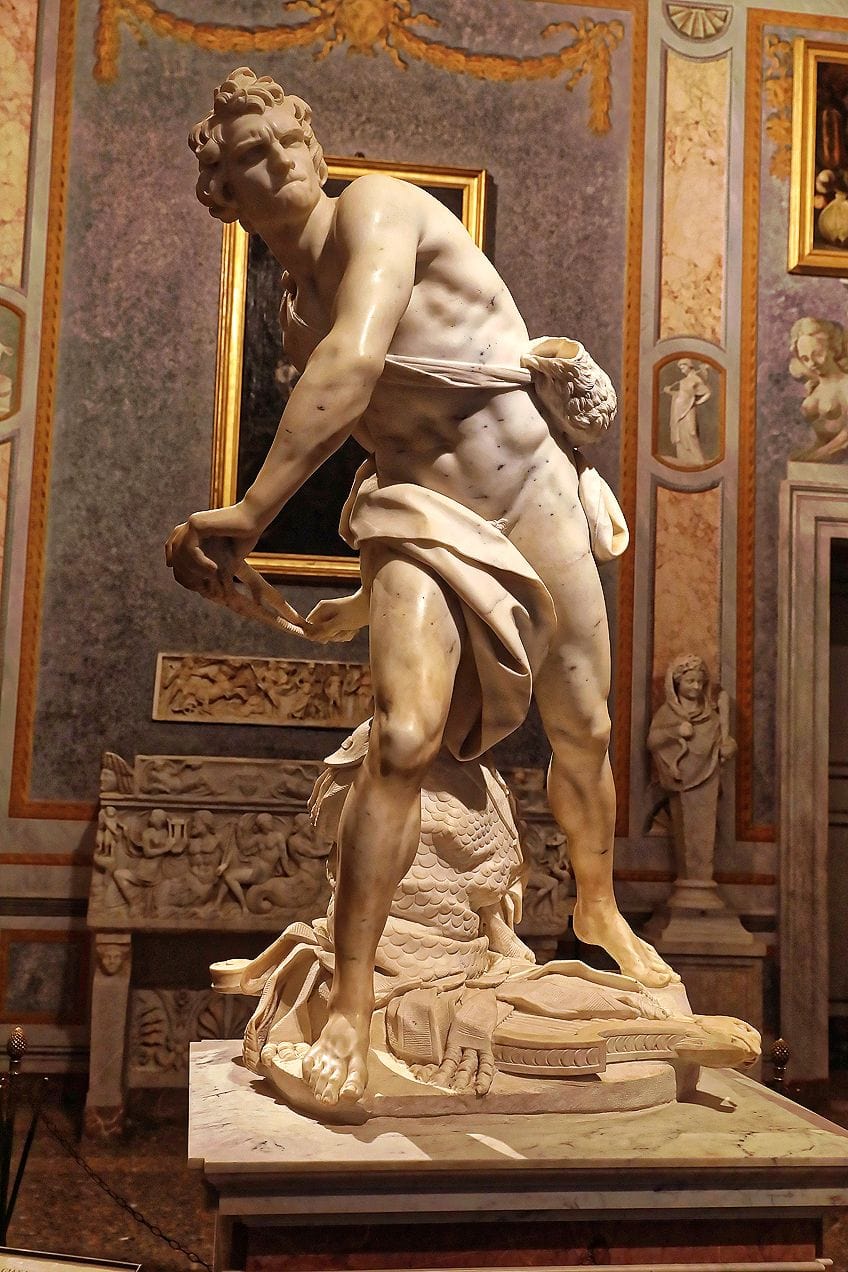
He also painted small canvases in oil and directed and performed in plays, as well as designed theatrical machinery and stage sets. He also produced numerous designs for decorative household objects such as mirrors, tables, and lamps. His work as a baroque architect included designing chapels, churches, public squares, and secular buildings. Many of his works were a mixture of architecture and sculptural design, such as his massive and elaborate monuments like public fountains and funerary displays.
He was alone amongst his contemporaries in being considered a suitable successor of the great Michelangelo, due to his immense skill at manipulating marble, incredible ingenuity of style, and versatility of technical ability.
A few notable examples of this famous Baroque artist’s work include:
- David (1624)
- The Ecstasy of Saint Teresa (1652)
- Apollo and Daphne (1652)
Diego Velázquez (1599 – 1660)
| Nationality of Artist | Spanish |
| Places Artist Lived | Seville, Spain |
| Medium Artist is Known For | Painting |
| Associated Movements of Artist | Baroque |
Diego Velázquez was the leading artist of the Spanish Golden Age, as well as in the court of King Philip IV. He was born on the 6th of June, 1599 in the city of Seville in Spain. His work was very unique for the period and he was known for his many renditions of historically significant events, as well as his portraits of Spanish nobility and commoners.
His style would go on to have a lasting influence on the Realists and Impressionists of the 19th century.

Many of his most iconic works have been re-interpreted by artists in the 20th century such as Dalí, Picasso, and Franci Bacon. Diego Velázquez was well acquainted with all the well-known artists of the period, yet managed to maintain and develop a unique style and set of artistic principles.
The paintings of most European courts of that period displayed a sense of ceremonial solemnity that Diego Velázquez seemed to greatly dislike.
He was also very inventive with his color palette and was able to produce a multitude of hues from a handful of paints. Due to his method of painting subjects directly from the model in real-time, very few constructional and referential sketches of his work remain. A few of the artist’s more notable artworks include:
- Infanta Margarita Teresa in a Blue Dress (1659)
- Las Meninas (1656)
- Portrait of Pope Innocent X (1650)
Anthony van Dyck (1599 – 1641)
| Nationality of Artist | Flemish |
| Places Artist Lived | Antwerp, Belgium, and London, England |
| Medium Artist is Known For | Painting |
| Associated Movements of Artist | Baroque |
Anthony van Dyck was a Flemish painter of the Baroque style born in Antwerp on the 22nd of March, 1599. His father was a wealthy merchant in the silk trade, and Anthony was the seventh of his children. At the age of just ten years old, van Dyck was sent to apprentice with the dean of the Saint Luke’s Guild and painter of small pictures, Hendrik van Balen. Although we don’t know the exact duration of his stay with van Balen, it is thought to be around three to four years that van Dyck had an apprenticeship.
Anthony van Dyck was already an established painter when he registered with the Saint Luke’s Guild in Antwerp in 1618.
He had opened up his own workshop a couple of years before registering with the guild, a sign that he might have been afforded some protection from his tutor Peter Paul Rubens, who had connections that would allow van Dyck to work independently without repercussions from the guild.
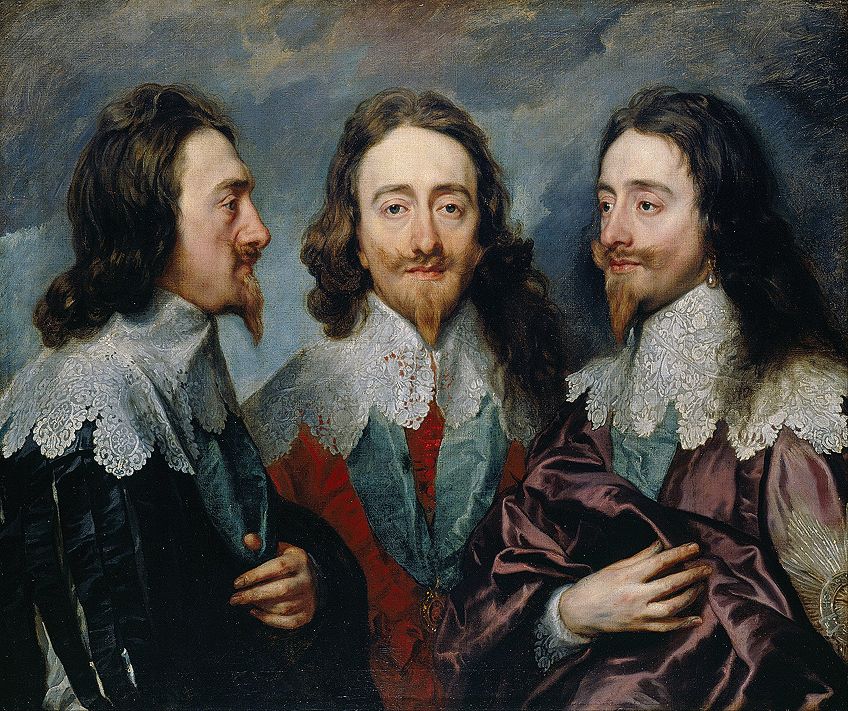
During the 1610s, he produced many mythological and religious scenes independently, as well as worked as the most important assistant to Rubens, helping him with numerous larger commissions such as the ceilings of the Church of Saint Charles Borromeo and the Decius Mus Tapestries. Although he also painted religious and mythological themes, it is due to his work painting the portraits of nobility that he and his contemporaries like Diego Velázquez and Hans Holbein are known for revolutionizing the genre. A few of Anthony van Dyck’s most well-known artworks are:
- Self-Portrait with Sunflower (1633)
- Charles I at the Hunt (1635)
- Charles I in Three Positions (1636)
Rembrandt van Rijn (1606 – 1669)
| Nationality of Artist | Dutch |
| Places Artist Lived | Leiden and Amsterdam, Netherlands |
| Medium Artist is Known For | Painting, Printmaking, Draughtsman |
| Associated Movements of Artist | Baroque, Dutch Golden Age |
Rembrandt van Rijn was born in Leiden in 1606 and is possibly the most well-known Dutch artist in our list of famous Baroque painters. The son of a wealthy miller father, Rembrandt moved to Amsterdam at the age of 18 to work for the popular artist, Piter Lastman. After six months of apprenticing with Lastman, he traveled back to Leiden to start his painting workshop. Here, he started accepting pupils such as Gerrit Dou, and word spread of his work and talent.
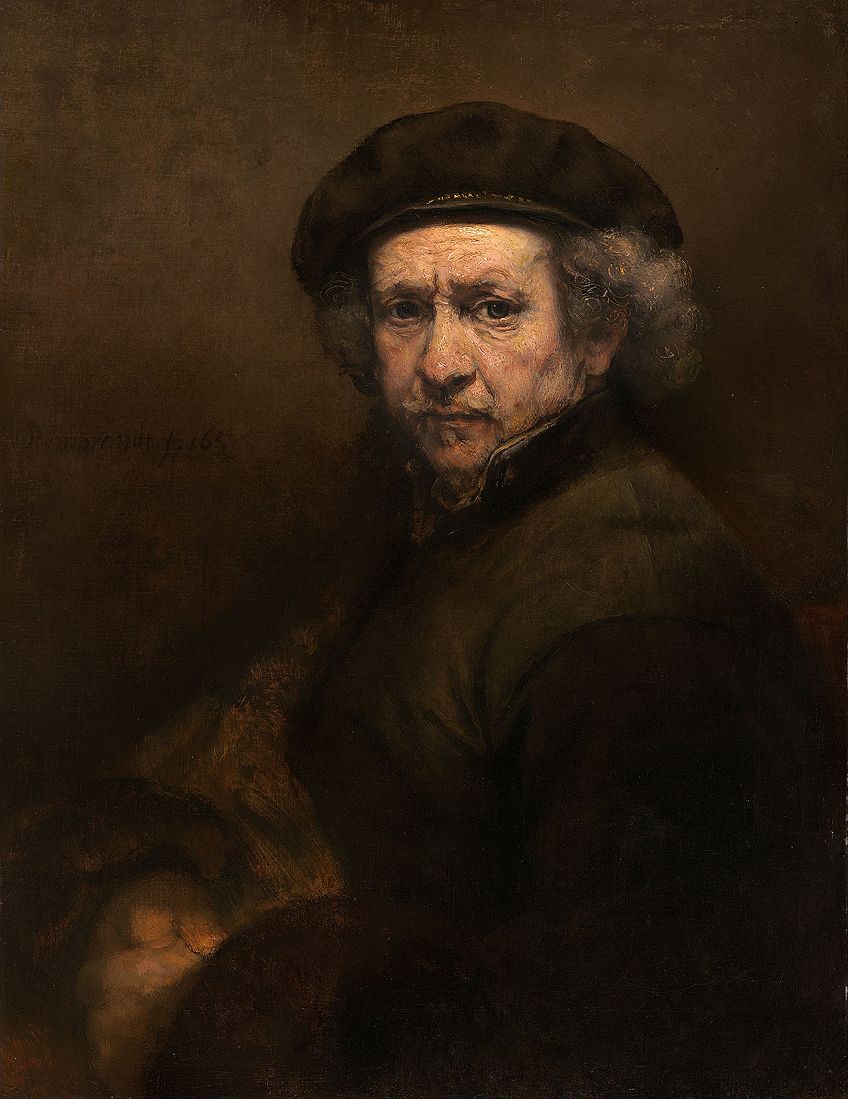
He returned to Amsterdam in 1631, where he started receiving his first sizable commissioned works, such as the art he created for the patron Nicolaes Tulp. He married Saskia van Uylenburch three years later in 1634. Despite his popularity and immense talent, his last years were marred with horrible circumstances. His wife passed away and he had to sell his possessions and home due to mounting debts. In the space of a few years, he would also lose his son, as well as Henkdrickje Stoffels, his mistress, and he then passed away in complete poverty in 1669.
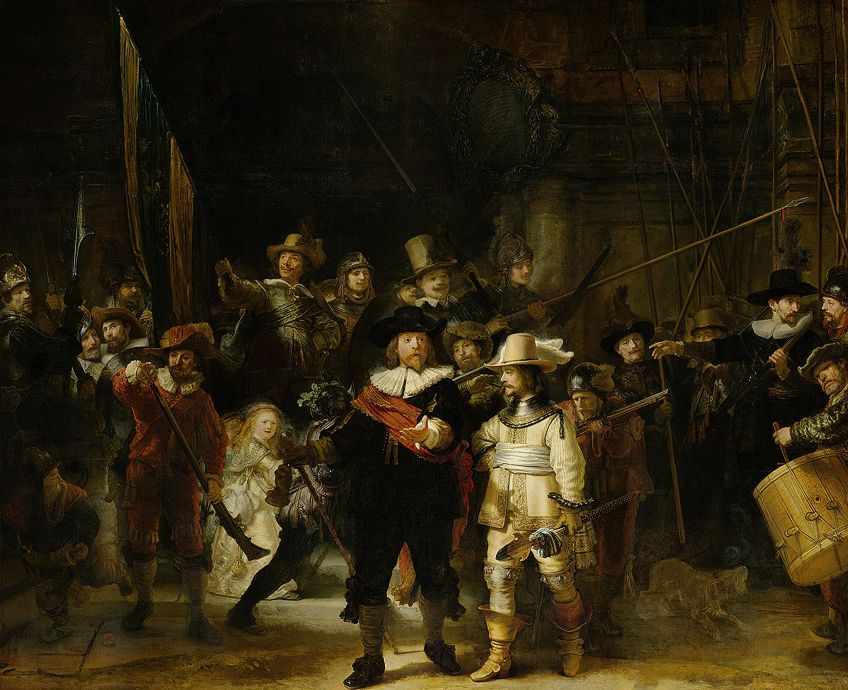
Rembrandt was most revered for his masterful application of light and shadow, known as chiaroscuro, which illuminated the subjects in his compositions. The dark backgrounds offered stark contrast to the vibrantly lit subjects in the foreground, giving his artwork a dynamic and dramatic effect.
He is thought to have produced more than 300 paintings, 2000 sketches, and 300 etchings during his career as an artist.
A few notable examples of Rembrandt’s include:
- The Abduction of Europa (1632)
- The Night Watch (1642)
- Self-Portrait with Beret (1659)
Bartolomé Esteban Murillo (1617 – 1682)
| Nationality of Artist | Spanish |
| Places Artist Lived | Seville, Spain |
| Medium Artist is Known For | Painting |
| Associated Movements of Artist | Baroque, Caravaggisti |
Bartolomé Esteban Murillo was born in the city of Seville in Spain in 1617. In terms of power and influence, at this time in its history, Seville was on the same level as Venice and Amsterdam. Due to its advantageous position on the trading route with the New World, the city was prosperous. However, while Murillo was making advances in his career, the city was going through a state of degradation and the population was decreasing due to the standard of living declining dramatically.
During this same period, the church was gaining traction and wealth and would start exerting much influence on the lives of the people of Seville.

In 1645, Murillo received his first commission. which was the production of 13 paintings for a church in Seville. This series depicted a different saint performing an act of charity on each canvas. Today, 11 of these canvases are still around and are stored in collections throughout Europe and Northern America. The series was so popular that it led to several other commissioned works for Murillo during the 1650s, including the Adoration of the Shepherds and the Virgin of the Rosary.
Due to the decline of the population in Seville as a result of plagues and other political and natural factors, it was far from its glorious heyday.
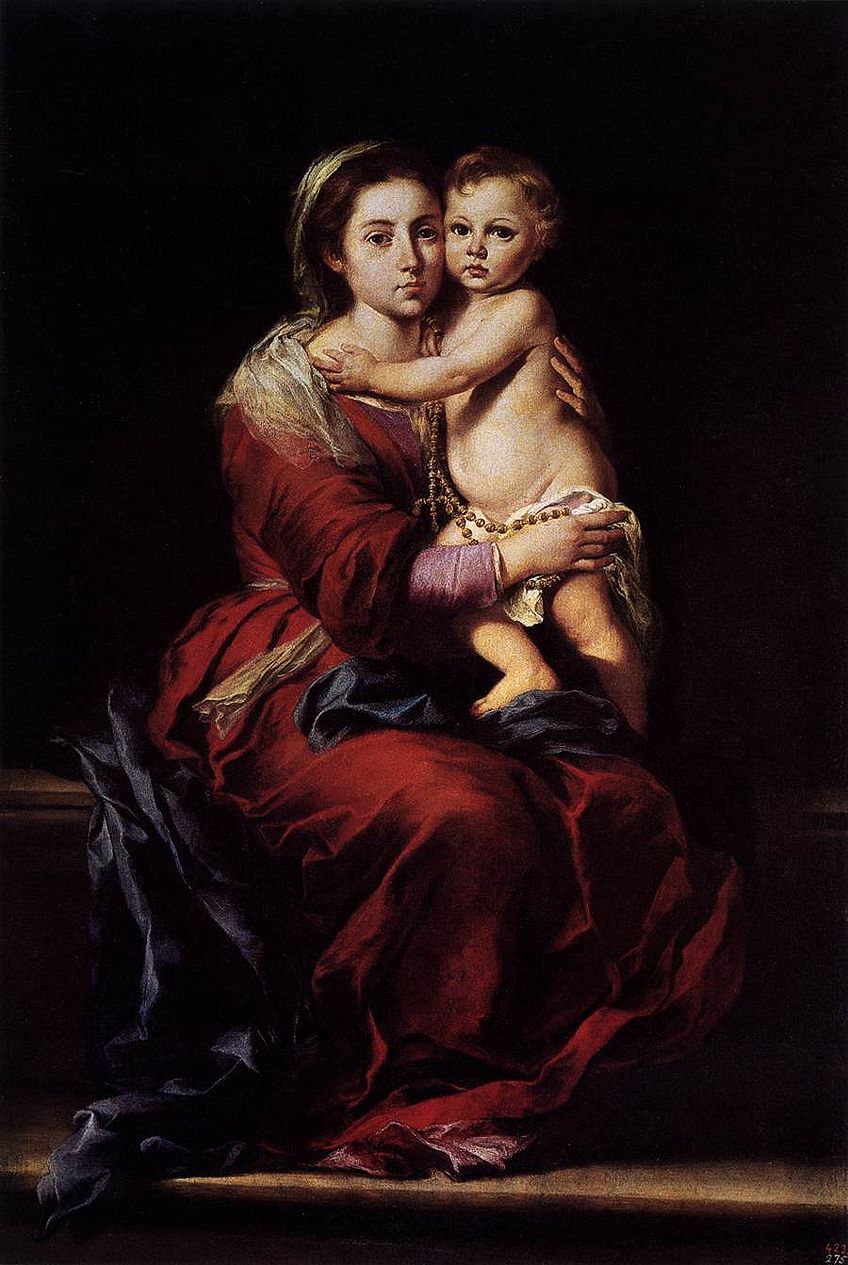
Urban areas were in a complete state of decay, and as the only institutes with any capital, churches started pumping money into charitable programs to uplift the social and economic conditions. They wanted these acts of charity to be duly noted by the public, and so spent much money financing artworks that portrayed their acts of charity in a favorable light. Murillo’s position as a devout Catholic ensured a lasting working relationship with the church and a constant supply of work. A few notable examples of Murillo’s work include:
- The Young Beggar (1645)
- The Angel’s Kitchen (1646)
- Virgin of the Rosary (1650)
Johannes Vermeer (1632 – 1675)
| Nationality of Artist | Dutch |
| Places Artist Lived | Delft, Netherlands |
| Medium Artist is Known For | Painting |
| Associated Movements of Artist | Baroque, Dutch Golden Age |
Born in Delft in the Netherlands, Johannes Vermeer was an artist from the Dutch Golden Age who also painted in the Baroque style. Vermeer is mostly known for his art that portrays everyday scenes of middle-class life, with a particular focus on interior scenes with a domestic theme. Among Baroque painters, Vermeer was a particularly meticulous painter and would spend long periods working on each painting, adding layers and details in a slow and unrushed manner.
This Baroque period artist was noted for his masterful and exquisite use of light in his compositions.

During his lifetime, Vermeer only achieved somewhat moderate success as an artist, mostly due to some recognition gained at the Hague. However, his paintings cost a great amount of money to produce and he passed away in December of 1675, leaving his debts behind with his family.
He only created around 45 artworks during his time as an artist, 36 of which are still in existence today. He mostly painted scenes of religious experiences and themes based on mythology.
Although not popular in his own time, his art was rediscovered in the 19th century and he has since then risen in status from a relative nobody in his own time to a highly revered artist of the Dutch Golden Age and Baroque periods. A few examples of this Baroque painter’s work are:
- The Milkmaid (1658)
- View of Delft (1661)
- Girl With a Pearl Earring (1665)
Elisabetta Sirani (1638 – 1665)
| Nationality of Artist | Italian |
| Places Artist Lived | Bologna, Holy Roman Empire |
| Medium Artist is Known For | Painting |
| Associated Movements of Artist | Baroque Art |
Elisabetta Sirani was an Italian Baroque painter born in Bologna, Holy Roman Empire on the 8th of January, 1638. The Sirani’s were a creative family and Elisabetta’s first training would come from her father in his studio. Her father Giovanni was an art merchant and artist of the School of Bologna. The Italian scholar and art historian Carlo Cesare Malvasia often took personal credit as the person who influenced Elisabetta’s father to teach her how to paint.
Some historians believe that her father was reluctant to teach her in the Bolognese style, but she was nevertheless able to pick up on his techniques and was soon after considered one of the best artists in the region.
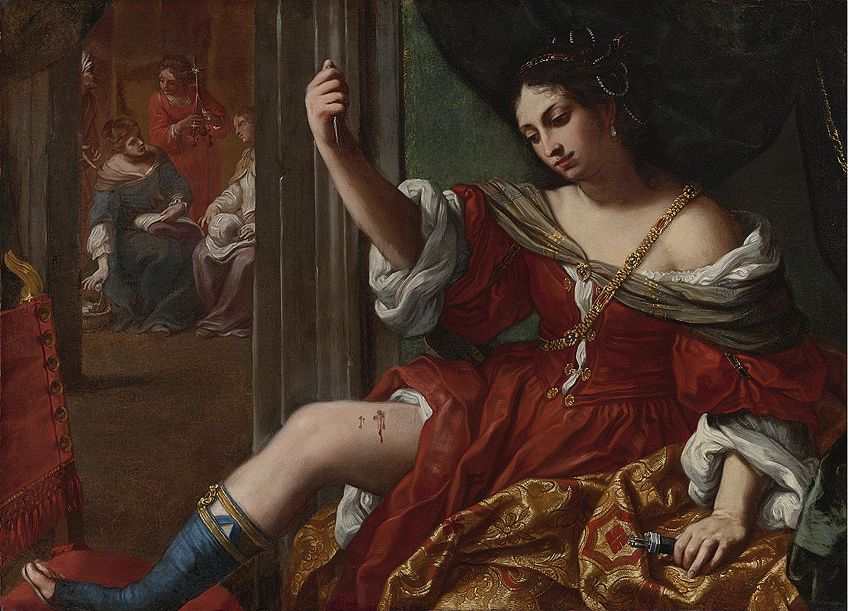
There were even people who believed she was the reincarnation of the Italian painter Guido Reni, and a cult began to grow around her. Her work has often been praised for her professionalism, her fast rate of production, and the originality of her compositions. After her father was struck with gout, she took over the family workshop and had great success until her mysterious and sudden death in 1665, thought to be due to her being poisoned by her housemaid. A few examples of this Baroque artist’s works are:
- Virgin and Child (1663)
- Madonna Contemplating the Baby Jesus (1664)
- Portia Wounding Her Thigh (1664)
In today’s article, we have learned about the history of a few of the most famous Baroque artists. Baroque painters were known for their ability to capture moments in history in a very dramatic manner that focused on the action of the scene and allowed the viewer to be drawn into the sheer awe and splendor of these magnificent artworks. We have covered some of the Italian Baroque painters, as well as Baroque period artists from the Netherlands and Spain.
Frequently Asked Questions
What Were the Most Common Themes in Baroque Art?
Due to the inseparable link between Baroque art and the church, most Baroque art was about representing religious and mythological moments in history and portraying those moments in a manner that reflected the glorious nature of the divine. There was also much portraiture produced of royalty and nobility in the Baroque style.
What Are the Most Common Qualities of Baroque Art?
A few of the notable qualities most often connected with the Baroque art style are a sense of grandeur, a rich sensuality, dramatic action, dynamic movement, creation of tension, and emotional awe and exuberance. Commonly applied techniques that help to create a distinct appearance are chiaroscuro and tenebrism, both of which focus on the dramatic results achieved by the contrast of very dark and very well-lit areas in their compositions. Tenebrism, however, focuses more on the dark elements, bringing a gloomier undertone to the art.
Isabella studied at the University of Cape Town in South Africa and graduated with a Bachelor of Arts majoring in English Literature & Language and Psychology. Throughout her undergraduate years, she took Art History as an additional subject and absolutely loved it. Building on from her art history knowledge that began in high school, art has always been a particular area of fascination for her. From learning about artworks previously unknown to her, or sharpening her existing understanding of specific works, the ability to continue learning within this interesting sphere excites her greatly.
Her focal points of interest in art history encompass profiling specific artists and art movements, as it is these areas where she is able to really dig deep into the rich narrative of the art world. Additionally, she particularly enjoys exploring the different artistic styles of the 20th century, as well as the important impact that female artists have had on the development of art history.
Learn more about Isabella Meyer and the Art in Context Team.
Cite this Article
Isabella, Meyer, “Famous Baroque Artists – Top Baroque Painters and Sculptors.” Art in Context. August 24, 2021. URL: https://artincontext.org/famous-baroque-artists/
Meyer, I. (2021, 24 August). Famous Baroque Artists – Top Baroque Painters and Sculptors. Art in Context. https://artincontext.org/famous-baroque-artists/
Meyer, Isabella. “Famous Baroque Artists – Top Baroque Painters and Sculptors.” Art in Context, August 24, 2021. https://artincontext.org/famous-baroque-artists/.


